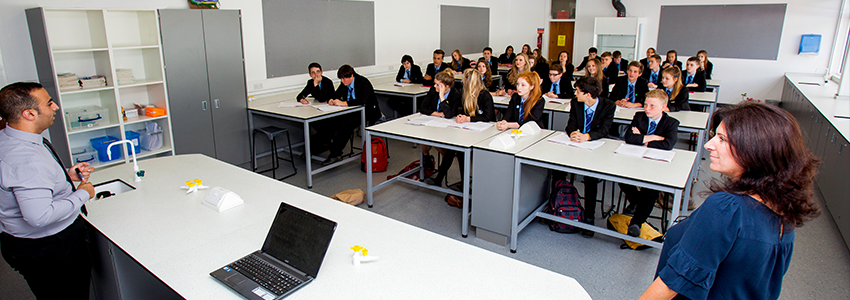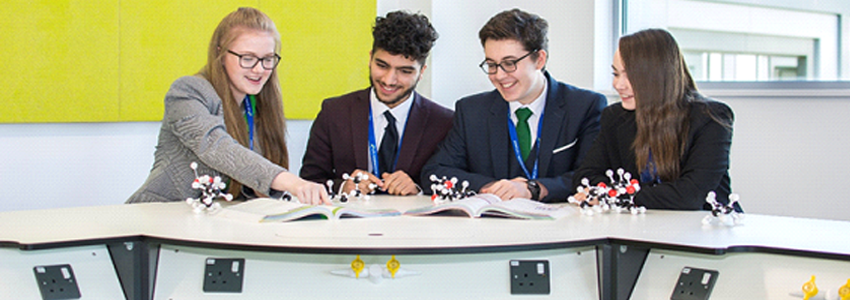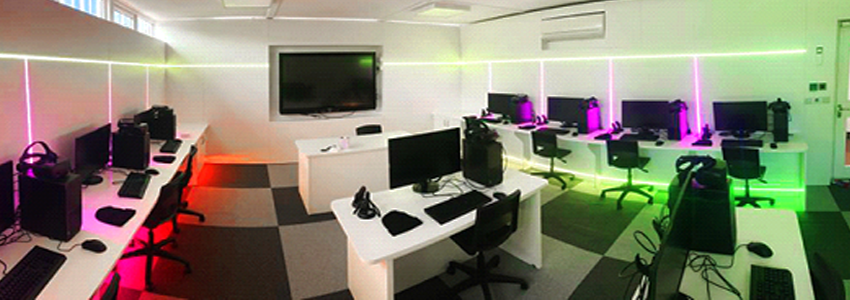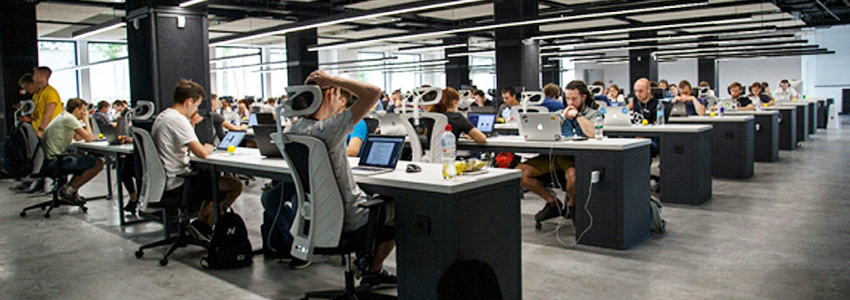Evolution of Teaching Styles & the Future Development with AI
The evolution of Teaching Styles in Schools and the demand for specific skills, significantly influences changes in both wages and job prospects, emphasising the importance of teaching relevant skills and employing effective teaching styles and methodologies.
While technology may automate certain foundational skills, educators still need to prepare students to navigate life’s competitive landscape.
Limitations of traditional teaching styles
Today’s educational framework continues to endorse conventional education, characterised by traditional teaching styles, that prioritise the memorisation of information. Although these teaching methods are effective for imparting fundamental knowledge and skills, they also come with inherent limitations.
Prioritising memorisation and repetition in traditional teaching can hinder the development of critical thinking, problem-solving and decision-making abilities in students. As a result, students may rely on memorisation rather than nurturing independent inquiry and analytical thinking, potentially overlooking the deeper understanding and significance of the information.
In today’s fast-paced world, where information is readily accessible, the ability to memorise extensive data no longer solely defines academic success. Employers and educators now value skills such as critical-thinking, problem-solving, creativity, and adaptability – qualities that traditional teaching methods, may not fully cultivate.
Therefore, while traditional teaching styles remain important, educators must supplement them with innovative and student-centred approaches.

Modern teaching styles: Methods and strategies
In modern teaching, the emphasis is on fostering strategic thinking rather than relying solely on memorisation to excel in exams.
This approach highlights adaptability over specialisation, necessitating teacher training, curriculum redesign, and personalised student support. It promotes autonomy and cultivates social, leadership, teamwork, and time-management skills, addressing gaps often overlooked by traditional teaching methodologies.
Flipped Learning
Flipped learning has emerged as a modern teaching approach and evolved teaching style, representing a reversal of the traditional classroom model. In this method, students initially engage with the subject matter independently, outside of class, accessing instructional materials like videos, readings or online activities at their own pace and convenience.
As a result students arrive prepared to participate in meaningful discussions, collaborative problem-solving and hand-on application of the concepts they have acquired, thereby enhancing their comprehension even further.
This teaching style empowers students to play an active role in their learning journey by shifting the focus from passive reception of information to active construction of knowledge through interaction with peers and teachers. By encouraging students to take responsibility for their learning outside of class, flipped learning promotes autonomy, self-regulation, critical thinking and metacognitive skills. It also facilitates deeper understanding and long-term retention of knowledge, crucial elements for lifelong learning.

Student-Led Learning
Student led teaching prioritises self-directed learning, creativity and discovery, moving away from rote memorisation and lecture-centred instruction. This teaching approach empowers students to assume greater responsibility for their educational journey by encouraging them to explore topics of interest, ask questions, and pursue independent investigations.
Instead of passively receiving information, students actively engage in the learning process, driving their own explorations and shaping the trajectory of their educational experiences.
Encouraged to integrate their interests and experiences, students work within a flexible framework established by the teacher. This fosters a sense of ownership, curiosity, and intrinsic motivation, as students delve into projects and activities that hold personal significance. By connecting new information with their existing knowledge, interests and experiences, this approach promotes deeper learning, facilitating a more comprehensive understanding of the subject matter.
Project-Based Learning
In project-based learning (PBL) students tackle genuine, real-world problems or challenges through practical or theoretical projects, either independently or in groups. This educational approach emphasises inquiry, critical thinking, and problem-solving abilities as students endeavour to identify solutions, conduct research, and devise creative and innovative resolutions. By immersing themselves in hands-on learning experiences, students not only gain a deeper understanding of concepts and principles, but also acquire practical skills applicable to real-world scenarios, such as communication, collaboration, and project management.

Additionally, project-based learning encourages connections and instills a growth mindset by prompting students to embrace challenges, take risks, and learn from failure, while tackling complex and open-ended issues.
Problem-Based Learning
Problem based learning, closely resembles project-based learning. It immerses students in authentic, real-world problems or challenges prompting them to critically analyse information, generate hypotheses, and devise solutions, either individually or collaboratively before formal instruction. This approach stresses active learning, self-directed inquiry, and collaboration as students explore complex issues, formulate research questions, and design investigations, progressing from basic knowledge acquisition to higher-order problem solving.
By engaging with real-world challenges, students develop essential skills such as critical thinking, resilience, adaptability, communication, and decision making, alongside a deeper understanding of the subject matter. This teaching style encourages metacognitive awareness and reflection as students monitor their progress, evaluate strategies, and revise approaches based on feedback and evidence, thus better preparing them to navigate complex, ambiguous, and rapidly evolving environments.
Collaborative Teaching
Collaborative teaching encompasses any project activity where students work together, towards shared goals and objectives. Through collaborative projects, discussions, and activities, students develop vital teamwork, communication, leadership, conflict resolution and interpersonal skills essential for success in academic and professional settings.
This approach promotes social interaction, peer learning, and collective problem-solving as students collaborate to address complex challenges and tasks. Collaborative teaching encourages students to appreciate diverse viewpoints, negotiate differences, and leverage each other’s strengths and talents to attain common goals.

Tactile Learning
Tactile learning, also known as kinesthetic learning, entails physical demonstrations and hands-on activities involving physical movement, manipulation, and sensory experiences. Through experiments, stimulations, role-playing or interactive demonstrations, students engage actively and explore concepts and materials firsthand.
By stimulating, multiple senses, this approach enhances retention and understanding as students link abstract concepts to tangible experiences. Whether in traditional or online environments, tactile learning enables students to practice skills and concepts in real time, facilitating immediate feedback and correction. It proves especially effective for practical subjects and skills development such as STEM disciplines and benefits students who excel in active, experiential environments, where engaging both body and mind enhances learning.
VAK Learning
VAK learning embraces diverse learning styles by integrating visual, auditory, and kinesthetic modalities into instructional design and delivery. Visual learners benefit from visual aids, diagrams, charts and videos that illustrate concepts and ideas, and facilitate information retention.
Auditory lerners thrive on verbal explanations, lectures, discussions, and audio recordings enabling them to process information through listening and verbal communication.
Kinesthetic learners excel in hands-on, experiential learning environments involving movement, manipulation, and physical engagement with materials. By incorporating a variety of learning materials and activities that cater to diverse needs and preferences, VAK learning optimises engagement, comprehension, and retention across a wide range of learners irrespective of their preferred learning style. This approach acknowledges that individuals learn best through a most effectively through a blend of visual, auditory and kinesthetic experiences, thereby accommodating diverse learning preferences.
Summary
Integrating these modern teaching styles into instructional methods can transform traditional classrooms into dynamic, student-centred learning environments that nurture curiosity, creativity, collaboration, and critical thinking. By embracing innovative pedagogical approaches that prioritise active involvement, personalised learning, and real-world applicability, educators empower students to become lifelong learners and active contributors to their own education.
AI teaching styles: The future of education?
The integration of AI into the UK education sector has gained considerable attention, reflecting the government’s commitment to embracing technological advancement in education. This commitment is evident in the government’s International Technology Strategy, which outlines ambitious objectives to position the UK as a global leader in technology by prioritising the development and integration of AI.
Through strategic initiatives and investments, the government aims to leverage the transformative potential of AI to enhance teaching and learning outcomes across all levels of education. Additionally, the growing interest in AI within the UK, is mirrored in the research community, where discussions encompass a wide range of topics, from generative AI to the ethical and responsible advancement of AI technologies.

DfE report Jan 2024 on generative AI in education
Educators acknowledge AI’s transformative potential in reshaping teaching and learning experiences, improving educational results, and meeting the diverse needs of learner. They stress the importance of purposeful implementation, ongoing professional development, and consistent support to seamlessly integrate AI technologies into educational settings. Ethical considerations, transparency, and accountability stand at the forefront for educators, who advocate for protecting student privacy, minimising bias and ensuring fairness throughout the development and utilisation of AI.
The DfE report highlights the necessity for collaborative efforts among policymakers, educators, researchers, industry stakeholders, and technology developers to leverage the benefit of AI in education while addressing associated challenges and risks.
Key strengths and weaknesses of integrating AI in modern teaching
Personalised learning
- AI-driven adaptive learning platforms process extensive data sets and adjust to the pace and learning preferences of each student, offering personalised content and recommendations. This customisation fosters increased engagement, understanding, and retention, as students receive instruction tailored precisely to their abilities and learning preferences.
Accessibility
- AI powered technologies have the potential in removing barriers to education for students with disabilities. For example, speech recognition software can assist students with speech impairments, while screen readers and text-to-speech tools can assist visually impaired students in accessing written content. By offering alternative formats and adaptable interfaces, AI can enhance inclusivity in the classroom, enabling all students can engage and learn effectively.
- Top of Form
Efficiency
- AI has the potential to improve classroom management by automating and streamlining administrative tasks for teachers, such as grading, lesson planning, and attendance tracking. This optimisation creates a conducive learning environment for both teachers and students, enabling them to focus more on teaching and mentorship. Furthermore AI can identify patterns of student behaviour and engagement, enabling teachers to intervene proactively and cultivate a supportive and inclusive classroom environment.
Data-driven insights
- AI analytical tools are transforming the methods educators use to evaluate student performance, monitor progress and inform instructional decisions. By analysing data derived from assessments, homework, and classroom interactions, AI algorithms can recognise patterns, trends, and areas requiring improvements. This data driven approach empowers teachers to adapt their teaching methods, interventions, and curriculum development to effectively address the diverse needs of their students, ultimately improving learning outcomes.
Preparing students for the future workforce
As AI becomes increasingly integrated into society, it’s crucial to prepare students for the demands of the future workforce. By incorporating AI technologies into teaching styles, educators can equip students with vital digital literacy skills, problem solving capabilities and adaptability. Exposure to AI-driven tools and concepts prepare students to navigate the swiftly changing technological landscape, empowering them to become lifelong learners and innovators.

Photo by Alex Kotliarskyi on Unsplash
However, over-reliance on AI may:
Undermine interpersonal skills
- Over-reliance on AI technologies in education could potentially diminish
- importance of human interaction and interpersonal skills in the learning journey. While AI offers personalised feedback and recommendations, it cannot substitute for the nuanced understanding, empathy, and mentorship that teachers offer. Excessive dependence on AI may impede students’ social and emotional development, as well as their capacity to collaborate, communicate, and think critically in real-life scenarios.
Exacerbate inequities
- The accessibility of AI powered educational tools could exacerbate existing disparities in access to quality education. Affluent schools and students may have greater access to advanced AI technologies and resources, thereby widening the educational gap between privileged and marginalised communities. To ensure equitable access to AI-driven education, policymakers and educators must address issues related to digital divide, resource allocation, and socioeconomic inequality.
Raise privacy concerns
- AI systems utilised in education frequently depend rely on gathering and analysing sensitive student data, including personal information, academic records, and behavioural metrics. The widespread use of AI raises concerns regarding data privacy, security, and consent, particularly concerning the collection, storage, sharing and protection of student data. To safeguard student privacy and adhere to regulations such as GDPR and COPPA, educational institutions must establish robust data governance policies and practices.
Perpetuate bias
- AI algorithms have the potential to inherit biases existing in the data they are trained on, resulting in inaccuracies or unfair outcomes in educational assessments, recommendations, and decision-making processes. For instance, biased algorithms may perpetuate stereotypes, discriminate against certain groups, or reinforce existing inequalities in education. To address bias and uphold fairness in AI driven education, developers must employ techniques like bias detection, algorithmic transparency, and diversity-aware training data.
Lead to job displacement among educators.
- The automation of teaching tasks by AI may provoke concerns about job displacement and the evolving role of educators. While AI can complement and enrich teaching practices, it cannot replace the expertise, creativity, and human connection that teachers provide in the classroom. Instead of displacing teachers, AI technologies should be regarded as tools to support and enable educators in their professional endeavours. To prepare for the future landscape of AI in education, educators may need to develop new skills, adapt to shifting roles, and embrace opportunities for lifelong learning.
Summary
In summary, the shifting landscape of the job market highlight the importance of teaching relevant skills and employing effective teaching methodologies in education. While traditional teaching methods endure, modern approaches prioritise innovation and adaptability to nurture critical thinking and practical skills. Modern teaching styles like flipped learning and project-based learning, introduce fresh avenues for student engagement and skills enhancement.
Simultaneously, the integration of AI in education holds promise for personalised learning and efficiency, although it raises concerns regarding equity and privacy. Striking a balance between traditional and modern methods, alongside sensible use of AI, is essential for preparing students for the future workforce’s challenges while preserving vital interpersonal skills and addressing potential drawbacks.
Sources:
Generative artificial intelligence (AI) in education – GOV.UK
Use of artificial intelligence in education delivery and assessment – POST
Use of artificial intelligence in education delivery and assessment
Artificial intelligence in schools – everything you need to know – The Education Hub
5 Pros and Cons of AI in the Education Sector | Walden University
The Pros and Cons of Using AI in Education – Harrow International School Hong Kong
Generative AI in education – Educator and expert views – GOV.UK
The impact of AI on UK jobs and training – GOV.UK
Education Intelligence Report – Oriel Square
AI and Education – Planning for the future — Lesson Creator
How Ai Is Used In Education & 10 Ways You Can Too – ClassPoint Blog


